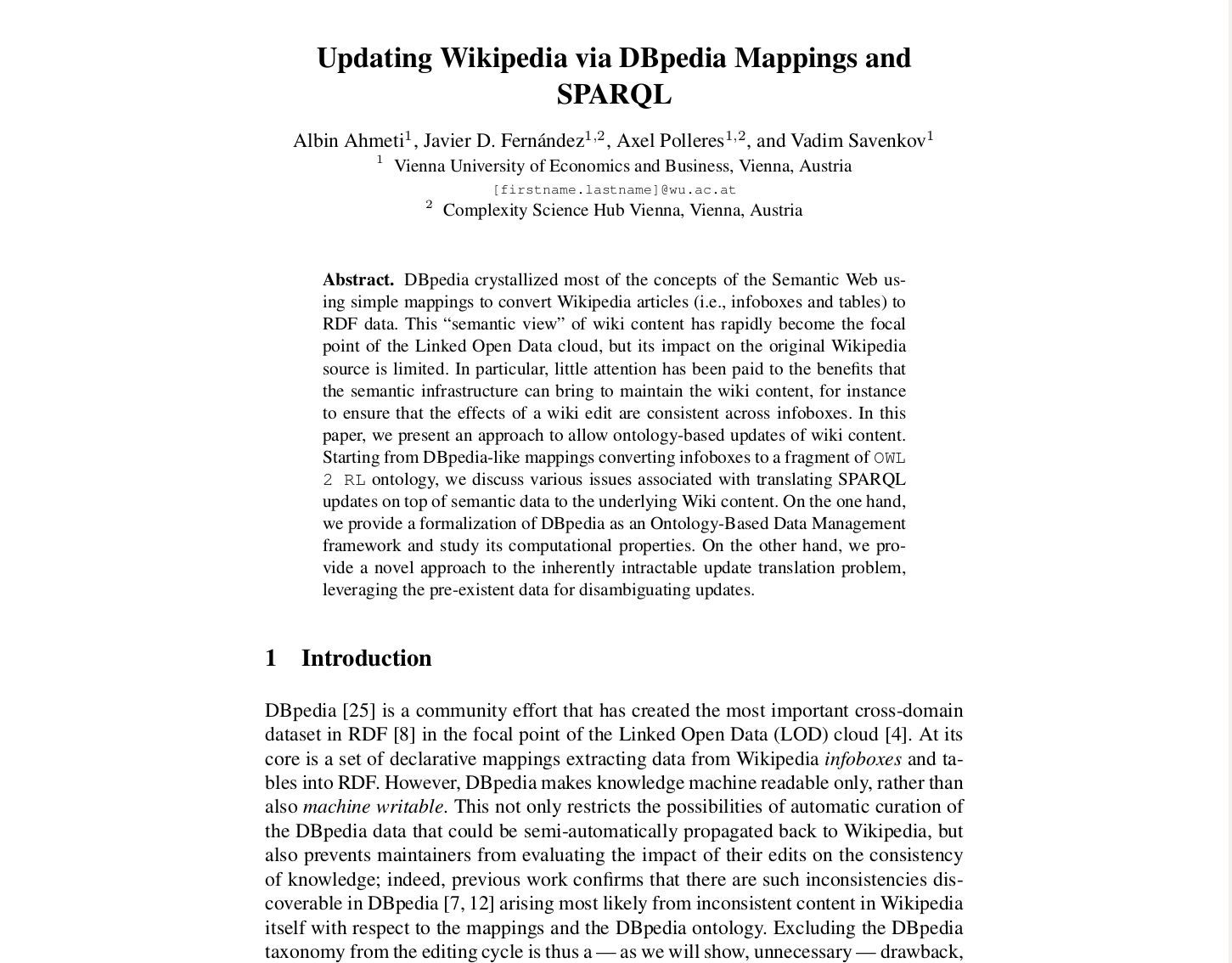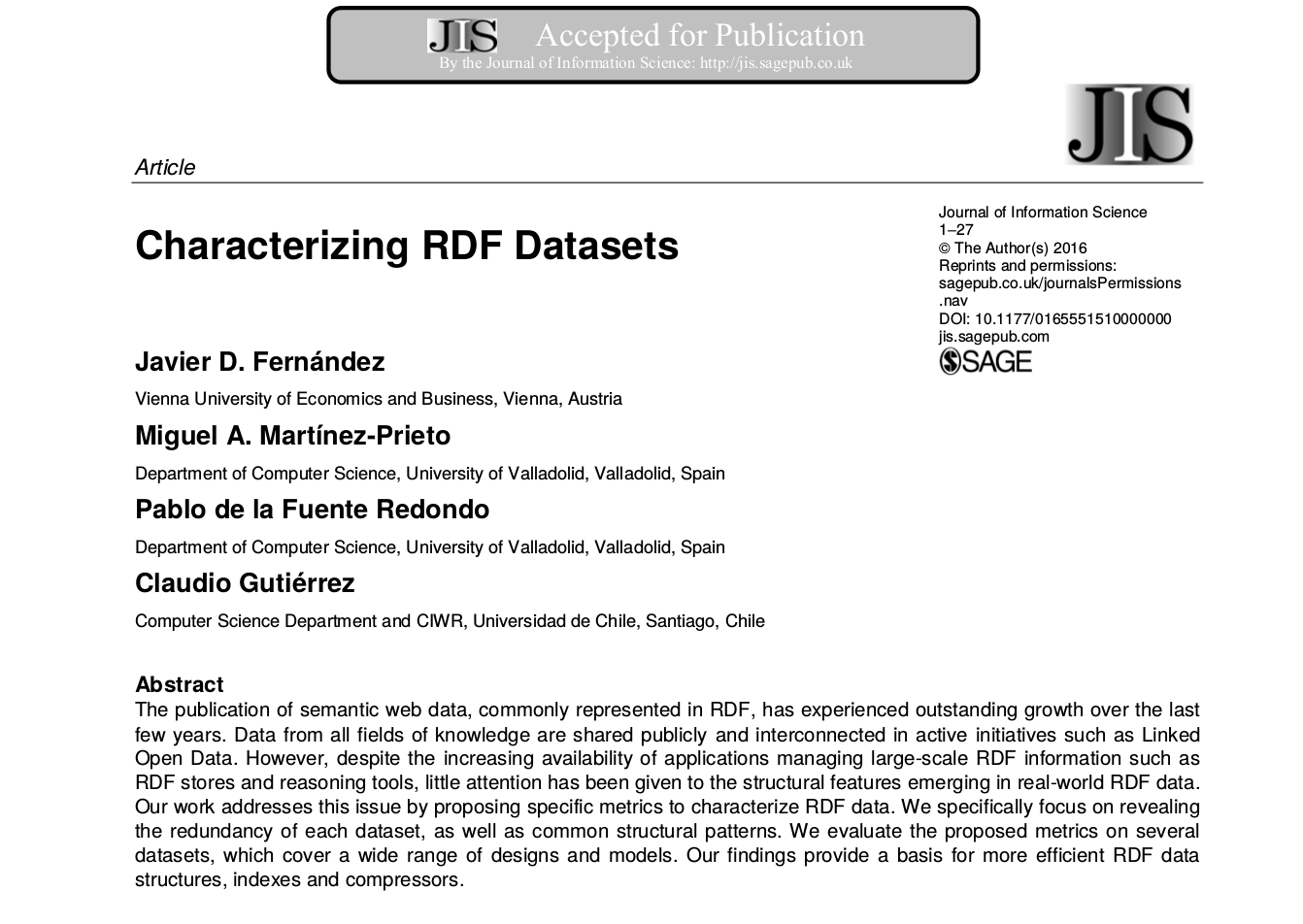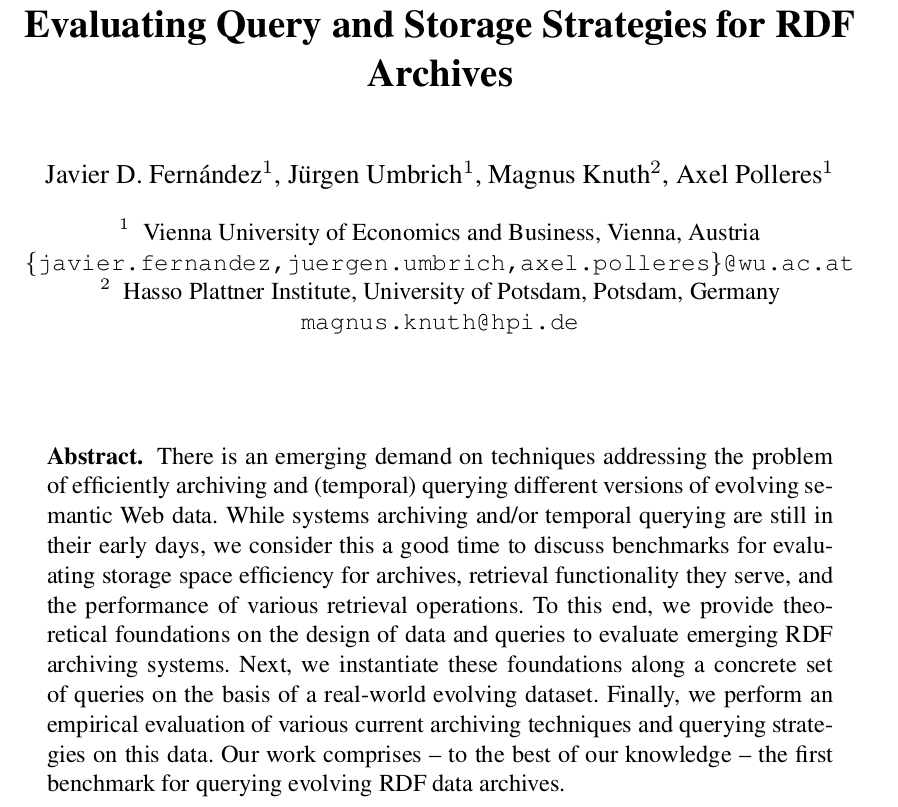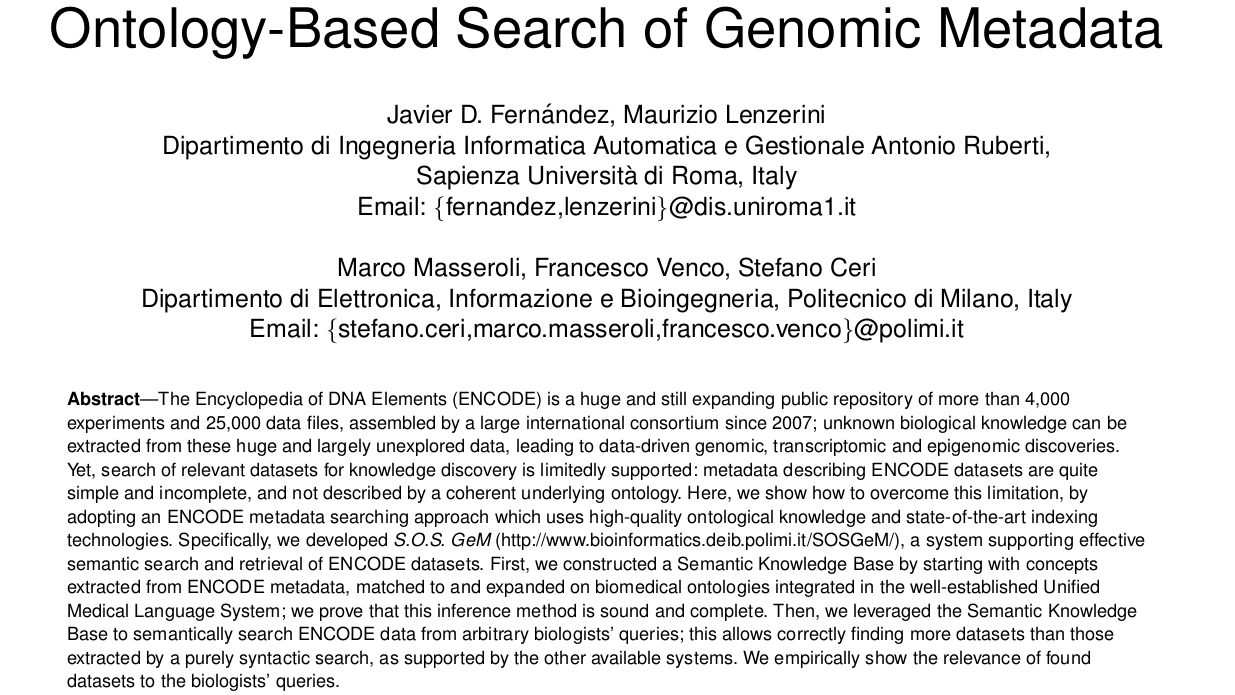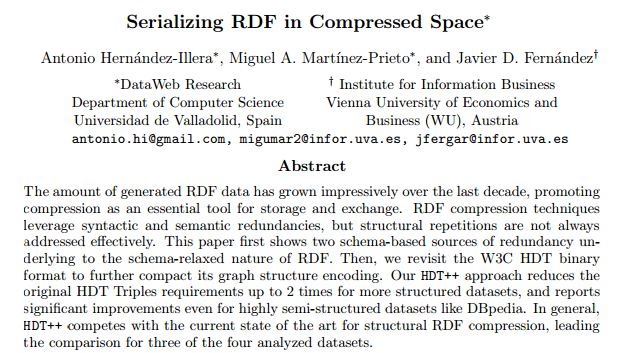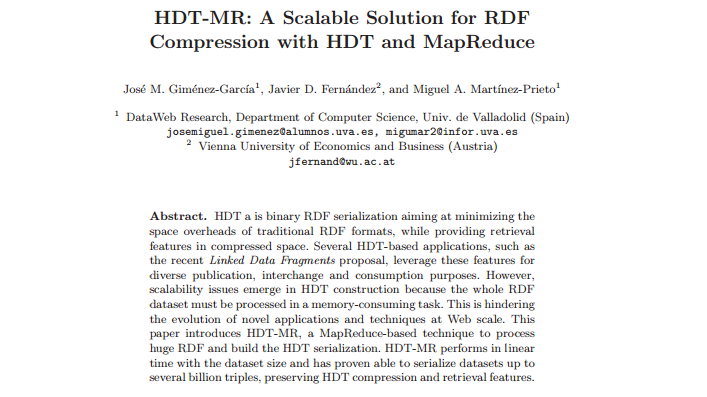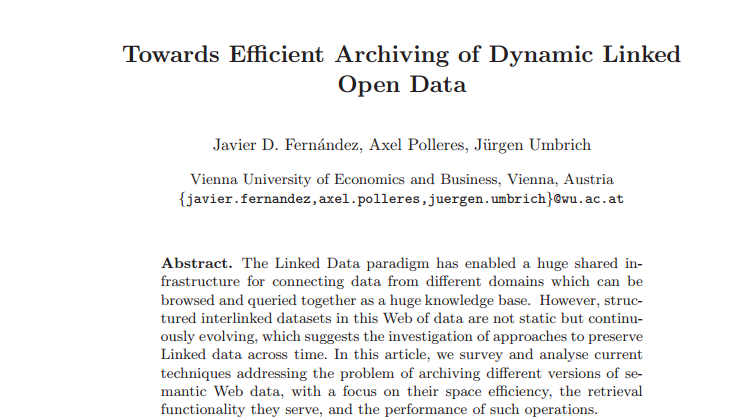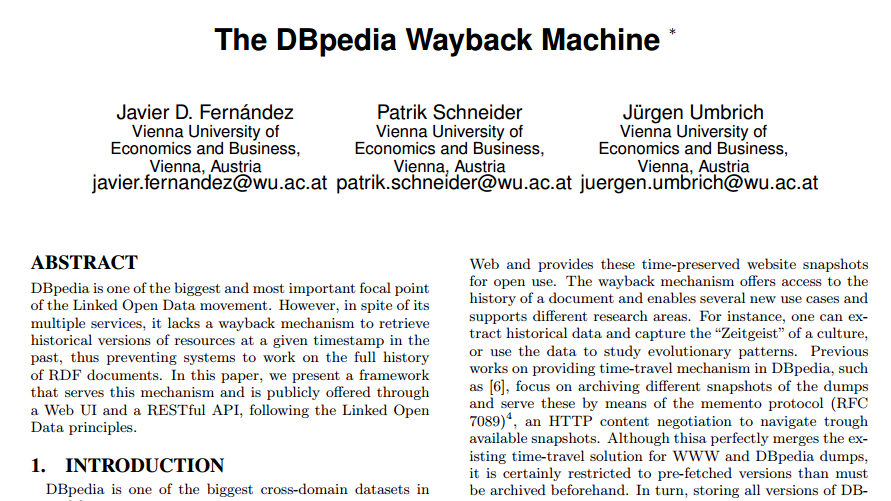Updating Wikipedia via DBpedia Mappings and SPARQL
In Proceedings of the ESWC 2017
DBpedia crystallized most of the concepts of the Semantic Web using simple mappings to convert Wikipedia articles (i.e., infoboxes and tables) to RDF data. This “semantic view” of wiki content has rapidly become the focal point of the Linked Open Data cloud, but its impact on the original Wikipedia source is limited. In particular, little attention has been paid to the benefits that the semantic infrastructure can bring to maintain the wiki content, for instance to ensure that the effects of a wiki edit are consistent across infoboxes. In this paper, we present an approach to allow ontology-based updates of wiki content. Starting from DBpedia-like mappings converting infoboxes to a fragment of OWL2 RL ontology, we discuss various issues associated with translating SPARQL updates on top of semantic data to the underlying Wiki content. On the one hand, we provide a formalization of DBpedia as an Ontology-Based Data Management framework and study its computational properties. On the other hand, we provide a novel approach to the inherently intractable update translation problem, leveraging the pre-existent data for disambiguating updates.
PDF | Bibtex

